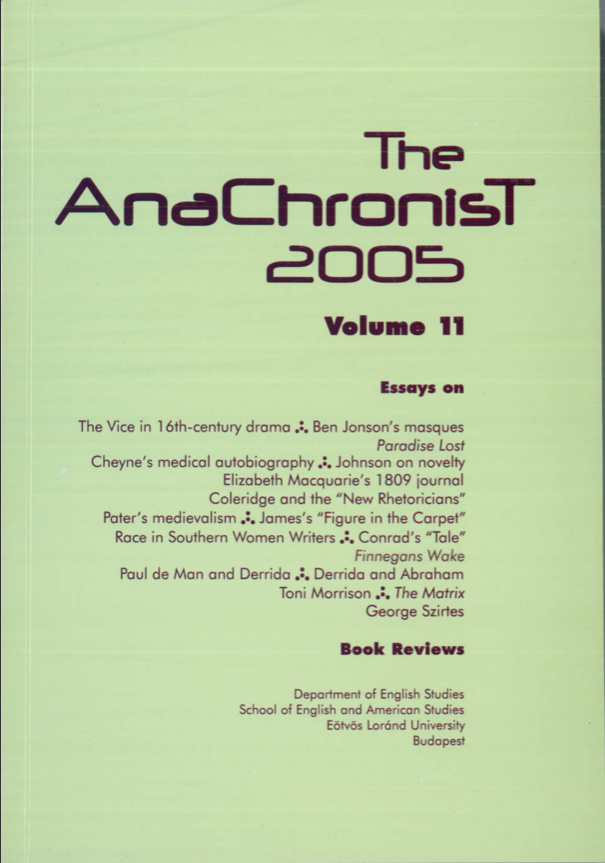The Embodiment of Grief
Passion and Rhetoric in Coleridge and the 'New Rhetoricians’
DOI:
https://doi.org/10.53720/JEHZ3411Abstract
Following recent work by James Engell, this paper sets out to explore points of connection between romantic literary criticism and the "new rhetoric" of the late 18th century. More specifically, it looks at how the earlier concept of the "rhetoric of passion" was taken up by Coleridge in his lectures on Shakespeare, focusing primarily on his treatment of Constance's speech on grief in King John. The same passage was evoked and strongly criticised by such "new rhetoricians" as Lord Kames and Joseph Priestley, who claimed that its intricate imagery rendered it unnatural and unsuitable to the expression of profound grief. Coleridge, by refuting these charges, redefines the earlier concept of the "language of passion" and turns it into a more comprehensive critical idea, which is able to accommodate figurative language beyond the rules of classical rhetoric or a rigidly conceived associationist psychology. He is aided in this by two things: first, by his new understanding of reading as on-going experience (as opposed to Kames's method, based on the analysis of a given passage in the light of pre-established rhetorical and psychological rules), and second, by his emphasis on the rhetorical "embodiment" that takes place in the "impassioned" literary text.

